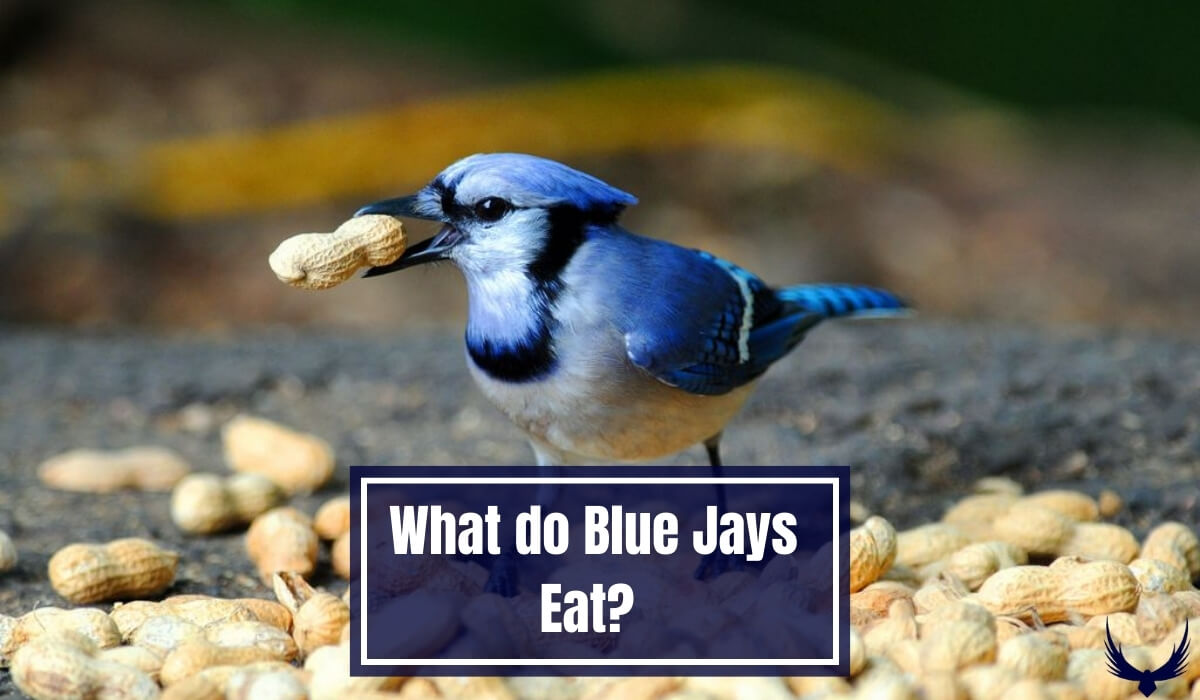Blue Jays are beautiful and clever birds that you might see in your backyard or local park. These bright blue birds with their distinctive crests are not picky eaters. They have a varied diet that changes with the seasons and what’s available in their environment.
From nuts and seeds to insects and even small animals, Blue Jays have quite an appetite. Their food choices play a big role in their survival and help shape the ecosystems they live in.
Let’s explore What do Blue Jays Eat and learn more about their eating habits.
What do Blue Jays Eat in the Wild?
Blue jays have a varied diet that changes with the seasons in the wild. Their primary food source is nuts, especially acorns, which they can crack open with their strong beaks. They also eat a wide variety of seeds from trees and plants.
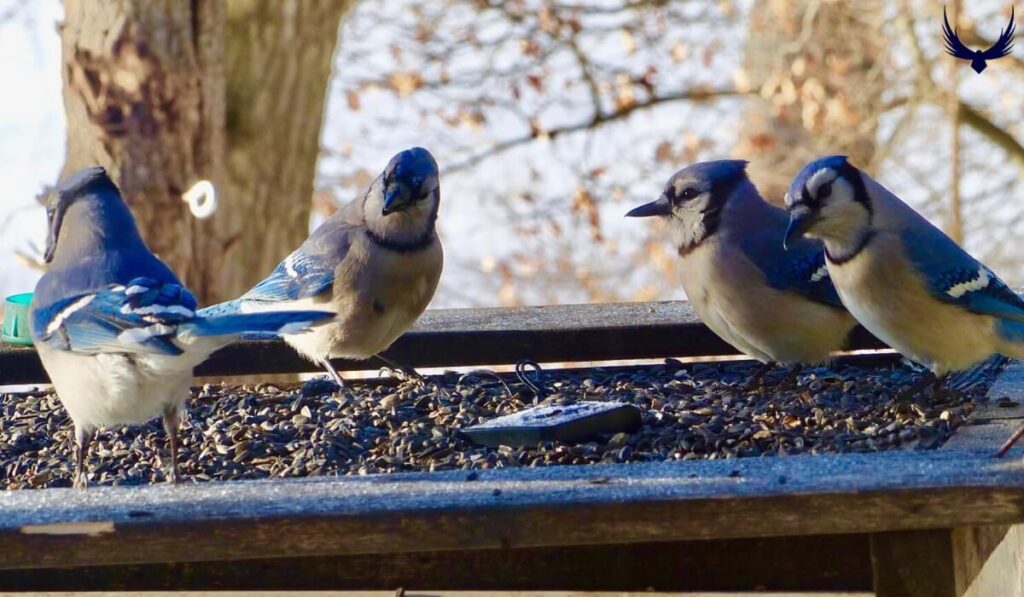
Insects form a significant part of their diet during spring and summer, when they consume caterpillars, beetles, grasshoppers, and other bugs. Blue jays are known to eat fruits and berries when available.
Blue jays also prey on small animals like mice, frogs, or even baby birds and eggs from other birds’ nests. During winter, when food is scarce, blue jays rely more heavily on nuts they’ve stored and may visit bird feeders in residential areas for supplementary food.
What do Blue Jays Eat in the Winter?
Blue Jays rely more on stored food that they’ve stored in caches during the fall to survive the winter. They eat nuts and seeds that they cached earlier in the year such as acorns, pecans, and sunflower seeds.
Blue Jays also visit backyard feeders in search of bird seed, suet, and other high-energy foods to help them get through the colder months.
When available, they may eat frozen berries or fruits that remain on trees and shrubs. When their stored food supplies run low, they may also hunt for insects and even small rodents to supplement their diet until spring arrives.
How do Blue Jays Hunt?
Blue Jays are not considered hunters in the traditional sense, but they do forage for food actively. They search for food mainly by sight, hopping on the ground or moving through tree branches.
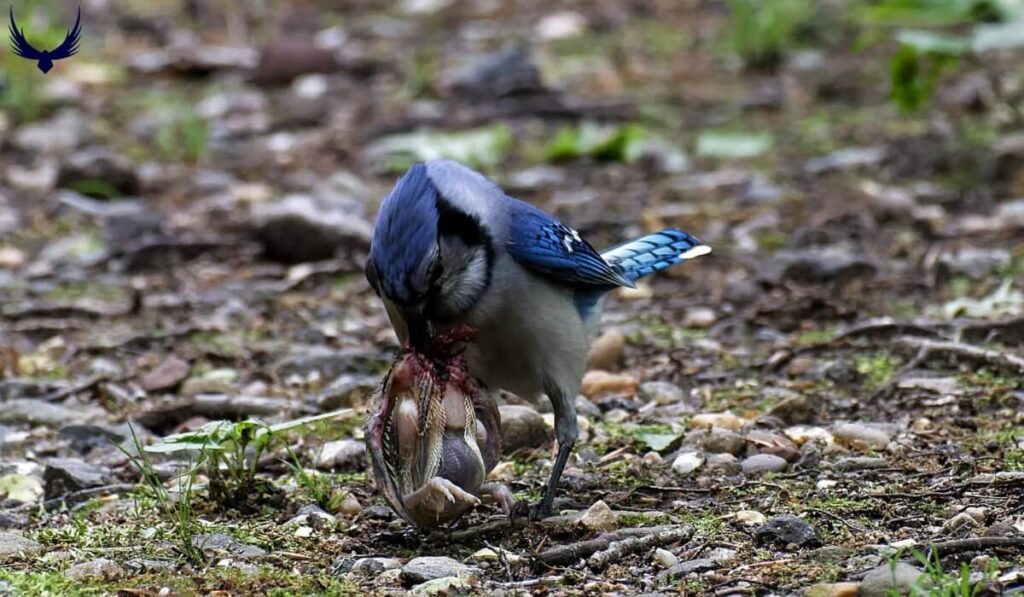
Blue Jays use their strong beaks to probe into bark crevices or soil looking for insects and other small creatures. They are also known to raid other birds’ nests for eggs or nestlings. When they spot food, they may swoop down quickly to grab it.
Blue Jays are opportunistic feeders and will take advantage of various food sources, including bird feeders in urban and suburban areas. Their intelligence allows them to problem-solve and find creative ways to access food.
What do Blue Jays Like to Eat?
Blue jays have a diverse diet. Their primary diet consists of nuts, especially acorns, beechnuts, and hazelnuts. They also eat seeds, fruits, and insects such as grasshoppers, caterpillars, and beetles.
Blue jays also consume small vertebrates like mice or frogs. In backyard settings, blue jays are attracted to bird feeders offering sunflower seeds, peanuts, and suet.
What do Blue Jays Eat at Feeders?
Blue Jays are omnivorous birds, which means they eat a variety of foods. At bird feeders, Blue Jays enjoy eating various seeds, such as sunflower seeds, peanuts, and suet. They also like to eat cracked corn, mealworms, and even small pieces of fruit or bread.

Blue Jays are known to be quite bold and will often visit backyard feeders to scavenge for their favorite treats.
Related Post: Do Blue Jays Migrate?
What do Baby Blue Jays Eat?
Baby Blue Jays, also known as nestlings, are fed a diet of insects, spiders, and other small prey by their parents. When the chicks are very young, the adult Blue Jays will bring back soft, protein-rich foods like caterpillars, grasshoppers, and beetles to help the babies grow.
As the nestlings get older, the parents will also provide them with seeds, nuts, and berries. This diverse diet helps the baby Blue Jays develop and gain the strength they need to eventually leave the nest and survive on their own.
How Often do Baby Blue Jays Eat?
Baby Blue Jays need to eat frequently to grow and develop. Parent blue jays feed their nestlings every 15 to 20 minutes during daylight hours. This intense feeding schedule continues from dawn to dusk, resulting in about 30 to 60 feedings per day.
The adult Blue Jays bring insects, worms, seeds, and other foods and place them directly into the mouths of the hungry chicks. This constant feeding schedule helps ensure the baby Blue Jays get the nutrition they require during the critical nestling stage.

As the babies get older, the feeding frequency may decrease slightly, but the parents will continue to provide meals regularly until the chicks are ready to leave the nest.
What do Blue Jays Eat?
Blue jays have a varied diet, eating nuts, seeds, fruits, insects, and even small animals like other birds’ eggs and nestlings. They are adaptable omnivores that take advantage of a wide range of food sources.
Do Blue Jays Eat Other Birds?
Blue Jays are known to eat smaller birds. They target smaller songbirds like sparrows, robins, and even the young of their own species. They are opportunistic predators and will sometimes raid the nests of other birds to feed on their young or eggs. This behavior helps Blue Jays supplement their diet during breeding.
Do Blue Jays Eat Mice?
Blue Jays are omnivorous birds, but they do not eat mice as a regular part of their diet. Blue Jays might occasionally eat small vertebrates like nestling birds or lizards, but it is rare for them to prey on mice.
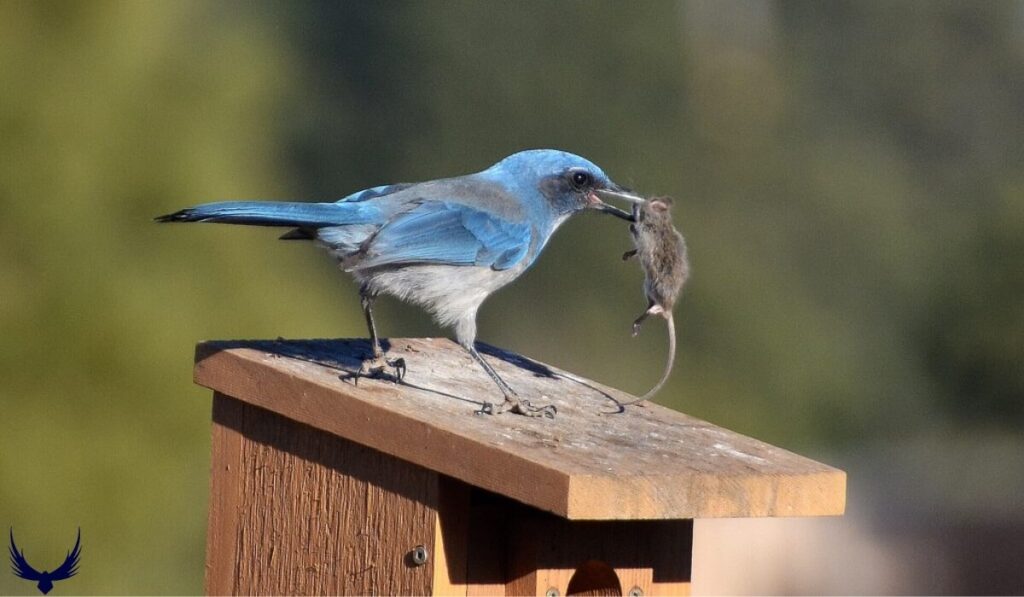
Their beaks are not designed for capturing and eating larger prey like rodents unlike birds of prey such as owls or hawks.
Do Blue Jays Eat Hummingbirds?
Blue Jays are known to eat other birds, but they do not target hummingbirds. Hummingbirds are too quick and agile for blue jays to catch easily, making them difficult prey.
Blue Jays focus on hunting for eggs, nestlings, and larger birds that are easier for them to catch and consume. While blue jay might opportunistically prey on a weak or injured hummingbird if the chance arises. Hummingbirds are not a common part of Blue Jay’s diet.
Do Blue Jays Eat Baby Birds?
Blue Jays are known to be opportunistic omnivores and may eat baby birds if they encounter them. They often raid nests to feed on the young or eggs if the nest is unattended or vulnerable. However, this behavior is not exclusive to Blue Jays, as many bird species engage in nest predation.
Do Blue Jays Eat Other Birds Eggs?
Blue Jays are known to raid nests of smaller bird species consuming the eggs they find. This behavior is part of their omnivorous diet and is more common during breeding season when they need extra protein.
However, it’s important to note that blue jays do eat eggs, this is not their primary food source, and such behavior is opportunistic rather than constant.
Do Blue Jays Eat Peanuts in the Shell?
Yes, Blue Jays do eat peanuts in the shell. They crack open the hard shells with their strong beaks. Blue Jays often visit bird feeders that offer peanuts, and they will carry them away to eat or store for later.

This behavior is common among Blue Jays and is one reason why they are popular visitors to backyard bird feeders.
Do Blue Jays Eat Wasps?
Yes, Blue Jays do eat wasps. Blue Jays are opportunistic feeders and consume a variety of insects including wasps. They use their strong beaks to crack open the wasp nests and feed on the larvae and adult wasps.
Do Blue Jays Eat Meat?
Blue Jays do eat meat. In addition to plant-based foods like corn, Blue Jays are also carnivorous and prey on small animals such as mice, lizards, and even other birds’ eggs and nestlings. They use their sharp bills to rip apart their prey and consume the meat.
Do Blue Jays Eat Corn?
Yes, Blue Jays do eat corn. Corn is a common part of their diet during the fall when it is readily available. Blue Jays visit backyard bird feeders and search for fallen corn kernels on the ground to supplement their diet.
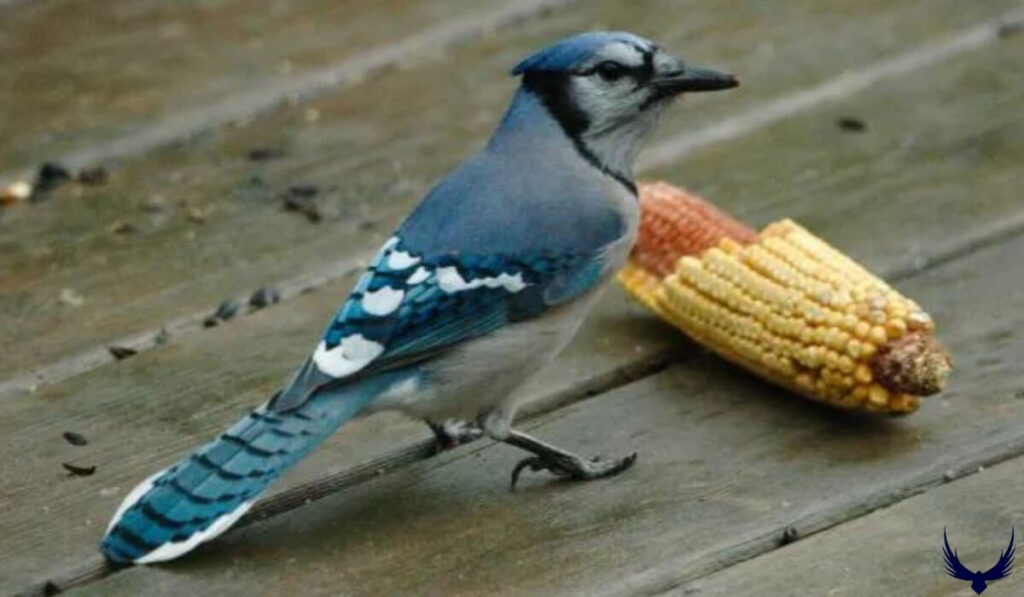
What Seeds do Blue Jays Eat?
Blue Jays eat various seeds including sunflower seeds, peanuts, and corn kernels. They use their sharp beaks to crack open the seeds and feed on the nutritious insides.
Do Blue Jays Eat Grass?
No, Blue Jays do not eat grass. Blue Jays are seed-eaters, and their diet consists mainly of nuts, seeds, fruits, and insects. They do not consume grass or other vegetation as their beaks are not well-suited for grazing on grass.
Do Blue Jays Eat Bread?
Yes, Blue Jays can eat bread. Blue Jays are known to be opportunistic feeders and will consume a variety of human-provided foods including bread.
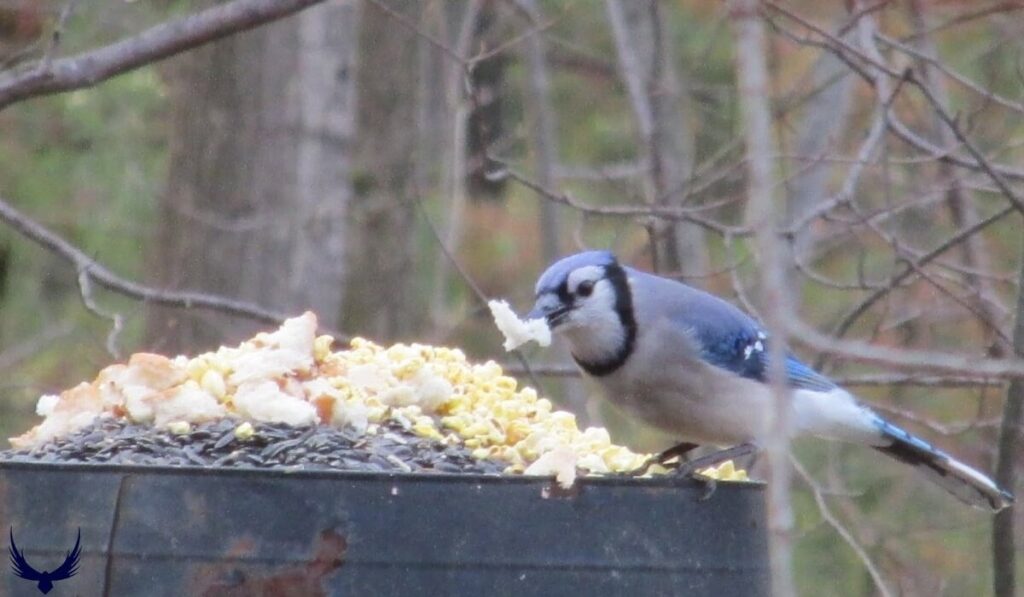
They may visit backyard bird feeders or scavenge for dropped or discarded bread crumbs. But bread is not notorious for them.
Do Blue Jays Eat Worms?
Yes, Blue Jays do eat worms. As omnivorous birds, Blue Jays consume insects including worms, which they find by foraging on the ground or digging in the soil.
Do Blue Jays Eat Acorns?
Yes, Blue Jays do eat acorns. Acorns are a staple food source for Blue Jays during the fall and winter months when other food sources may be scarce. They use their strong beaks to crack open the acorn shells and feed on the nutritious nuts inside.
Do Blue Jays Eat Blueberries?
Blue jays do indeed eat blueberries, and they are quite fond of them. These blue color birds have a diverse diet that includes various fruits. Blue jays eagerly consume both wild and cultivated blueberries, often visiting gardens or orchards where these berries grow.
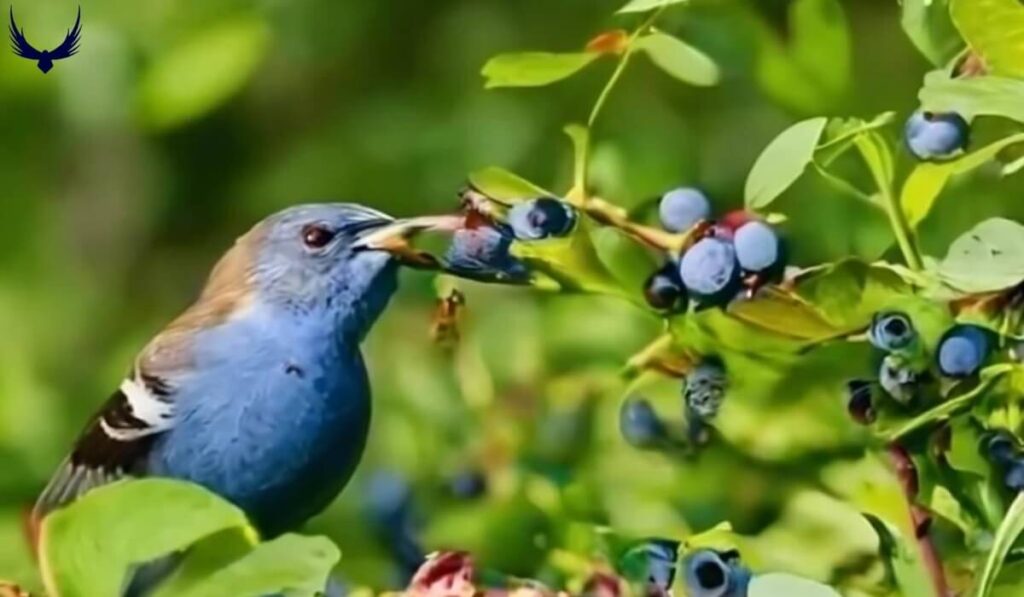
While blueberries are not their primary food source, they provide a nutritious and tasty supplement to the blue jay’s diet during the summer months when berries are ripe.
Do Blue Jays Eat Apples?
Blue Jays in addition to their typical diet of nuts, seeds, and insects, they also consume fruit including apples. They may visit orchards or search for fallen apples on the ground to supplement their diet.
What Animals Eat Blue Jays?
Blue Jays have several natural predators in the wild. Larger birds of prey such as hawks, owls, and even other jays, will sometimes hunt and eat blue jays.
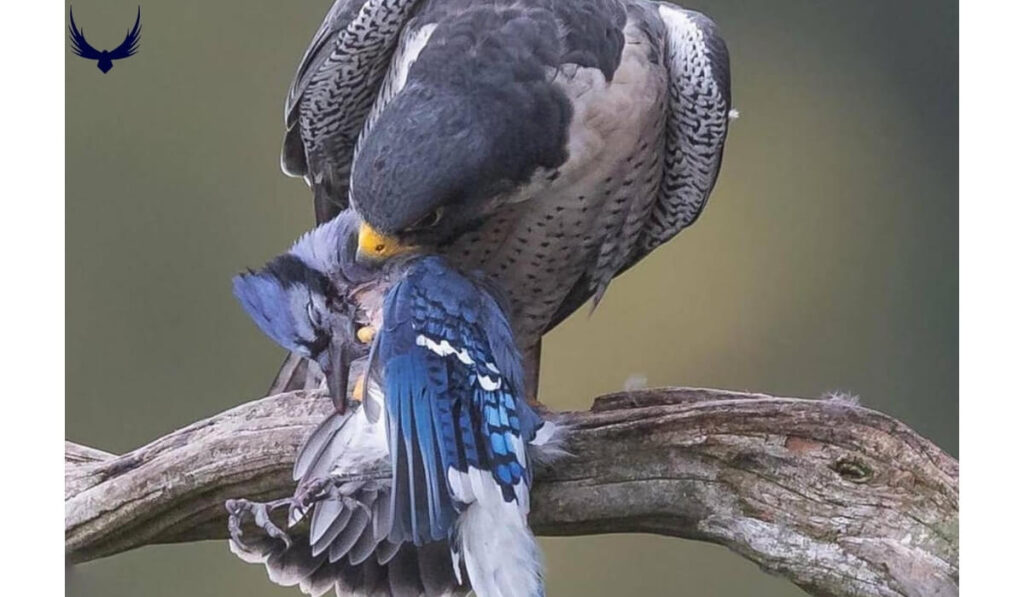
Snakes, raccoons, and cats can also be a threat to blue jays when they are nesting or feeding on the ground. As medium-sized birds, blue jays must be wary of these predators to survive in their natural habitats.
What do Blue Jays Drink?
Blue Jays drink water to stay hydrated. They will visit bird baths, ponds, or other sources of clean water to drink. In addition to water, Blue Jays may also drink the nectar from certain flowers or the juices from fruits they consume, but water is their main source of hydration.
FAQS – What does a Blue Jays Eat?
How many Peanuts can a Blue Jay Eat in a Day?
Blue Jays can eat a surprisingly large number of peanuts in a single day. Depending on their hunger and availability of food, Blue Jays can eat about 10 to 20 peanuts in a day. They are known to store extra peanuts for later.
Why do Blue Jays Eat other Birds?
Blue jays eat other birds, their eggs and nestlings as part of their omnivorous diet. This behavior helps them obtain protein and other nutrients during breeding season when they need extra energy for raising their own young.
Do Blue Jays Eat other Birds Babies?
Yes, Blue Jays will sometimes raid the nests of other birds to feed on their eggs and baby chicks. This provides an important source of protein and nutrients for the jays during breeding season when they have their own young to feed.
Why do Blue Jays Eat Baby Birds?
Blue Jays eat baby birds like nestlings to supplement their diet with additional protein and calories during the breeding season when they need extra resources to feed their own young.
What do Blue Jays Like to Eat Most?
Blue Jays have diverse tastes, but they seem to enjoy eating nuts and seeds such as acorns, pecans, and sunflower seeds. These high-energy foods provide the calories and nutrients Blue Jays need to thrive.
How do Blue Jays Eat Peanuts in the Shell?
Blue jays eat peanuts in the shell by holding the peanut with their feet and using their strong beaks to crack open the shell. They then extract and eat the nut inside, often storing extras in their throat pouch to eat later or for future use.
what Does Seeing a Blue Jay Mean?
Seeing a Blue Jay is thought to have special meaning. Some people believe it’s a sign of good luck or protection. Others see it as a reminder to be bold and speak your truth, just like the Blue Jay’s loud call. However, for many, it’s simply a beautiful moment to enjoy nature’s wonders.

